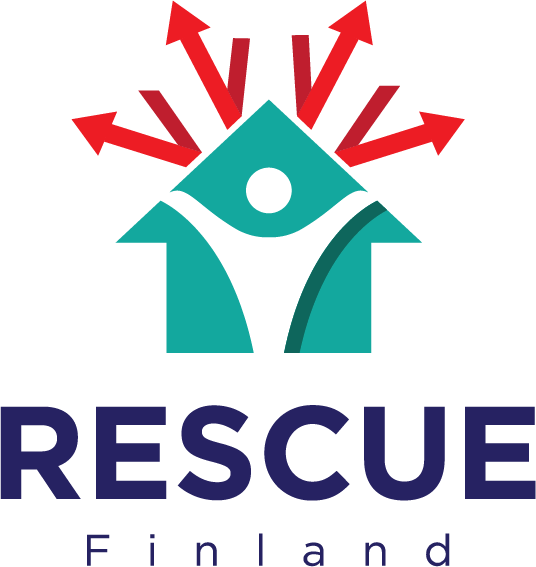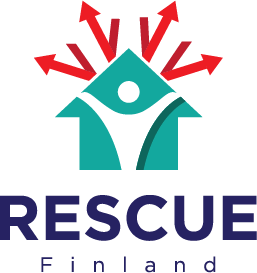The pandemic forces us to re-think our hopes and desires about places
October 7, 2021 . Written by Joni KarjalainenFigure 1. Everything is connected, as fungal networks, in this image of the future of 2041.
The coronavirus pandemic fuelled concern, uncertainty, and contestations. One feature of the crisis concerns the claims of a “new normal”. More interpretation is needed to make sense of these claims and how the post-pandemic built environment should look like.
The coronavirus pandemic (COVID-19) emerged as a dramatic shock. When writing this post (in October 2021), nearly five million lives have been lost all around the world. A crisis affects daily behaviour, practices, patterns, and habits. The use of communal, public and private space was dramatically altered and global trade disrupted. Households, communities, schools, and many other institutions, have started to operate from a distance. Border closures, lockdowns, epidemic waves, and virus mutations have upheld a state of uncertainty and pushed the future horizon further away.
The capacities of individuals, as well as peer and community support, are highlighted, while authorities have been under considerable pressure. A notable characteristic of the pandemic has been the speculation of a “new normal”. The new normal points to something new happening, a new status of things, and of something ‘old’ not returning. In many fields and sectors, new ideas have been propelled. A disruption in our systems also opens up a space for re-imagining them and to thinking about potential future crises. Any crisis is a disruptor, thus propelling us towards futures thinking, as a critical need and skill (https://ffrc.wordpress.com/2020/10/22/the-pandemic-triggered-a-futures-tsunami/).
Re-configuring our built environments
At least to some degree, unexpected events and discontinuities are bound to happen. They affect many directly or given their systemic nature, indirectly. From the point of view of anticipation studies (Poli 2017) and futures studies (e.g. Son 2015), we may see understanding crises as part of futures literacy (Miller 2018). During the COVID-19, the main focus has been in navigating the present, but more active reasoning on what the “new normal” could look like, is needed. While some expect little more than a return to pre-pandemic life, with perhaps minor tweaks (Sardar 2021), others see a chance for a reset or even a transformation.
The COVID-19 pandemic, as a health crisis, affected mobility and delivery infrastructures. If critical infrastructures are affected, their impact on society usually is aggravated (Labaka et al. 2016). Office spaces and entire districts were emptied. Entrepreneurs and employees had to work and children study from home. The elderly people were separated from loved ones. Emotionally, the shock caused short-termism, survivalism, but also care and compassion. Responses, such as mask debates, have highlighted conflicts of personal reasoning, collective norms, and regulatory environments. Nature has been appreciated, even so, that certain decision-makers broke their own rules (https://www.bbc.com/news/52828076).
At the same time, the built environment remains under massive climate pressures (UNEP 2020). Given our interest in the future, the climate concern seems to carry a metaphor of ‘calm before the storm’. What a sigh of relief then to see a temporary break in the rise of emissions. “Smart” cities are not automatically sustainable (Ahvenniemi 2020), and our built environment is called to become compatible with, for example, the energy transition (e.g. Brown et al. 2020). Alongside making sure that the built environment adapts, how can it be made crisis-resilient under diverse circumstances – even for crises we have not yet faced?
Emerging futures of the built environment
Crises catalyse debate of our reasonings and our expectations, and how they shape preferred futures. Clearly, distance work and downtime can co-exist with a yearning to close colleagues, friends, and family members. And, in tandem with the uncertainty, there are strong expectations of post-crisis life. Such were the desires that were recently explored in two pilot futures workshops, organised virtually by the Finland Futures Research Centre at the international Futures Conference on “Learning Futures” and with the Institute for Futures Research (IFR) from South Africa, in its Futures Methods Workshop series.
It can be claimed that images of the future shape emerging futures. We have images of the future, conscious or unconscious ones, of many kinds of futures. Through futures dialogue, we can aim to make sense of our mindsets and sentiments. In emerging from the crisis, an immediate task concerns lessons learned and exploring the hopes to be realised. For example, if the “different rhythm in daily life”, as mentioned at the workshops, should become a feature of our post-pandemic lives, there are clear expectations for the built environment. In such tasks, we must also think of the actors designing these environments. By identifying and analysing pioneers (Heinonen and Karjalainen 2019), we may get a whiff of the creative minds and models of the future.
Ultimately, in crises also lies the potential for change through learning. Given how isolated and lonely many have felt, can we find strategies that help us cope, even in times of crisis? By envisioning post-pandemic futures, we reduce angst, by showing how and become more conscious of our assumptions. By identifying what drives our aspirations, we may be able to improve our capacity to realise our desirable futures. We may conclude by reflecting on how will we want the built environment to interact with nature, digital technologies and self-organised communities in the 2030s, 2040s or 2050s, and in times of any future crises?
Written By Joni Karjalainen
The author is a project researcher at the University of Turku, Finland Futures Research Centre. Alongside his doctoral studies in Futures Studies, he studies post-pandemic urban futures, in a new research project “RESCUE” with Aalto University and Tampere University.
Readings
Ahvenniemi, H. (2020) Advancing sustainable transformation of cities - An analysis of city and household level efforts in the pursuit of carbon-neutrality targets. Aalto University publication series DOCTORAL DISSERTATIONS, 214/2020. https://aaltodoc.aalto.fi/handle/123456789/73172
Brown, Donal, Stephen Hall, Mark E. Davis (2020) What is prosumerism for? Exploring the normative dimensions of decentralised energy transitions, Energy Research & Social Science 66, 101475, https://doi.org/10.1016/j.erss.2020.101475.
Heinonen, S. (2020). The pandemic triggered a futures tsunami. Finland Futures Research Centre blog text 22.10. https://ffrc.wordpress.com/2020/10/22/the-pandemic-triggered-a-futures-tsunami/
Heinonen S., Karjalainen J. (2019) Pioneer Analysis as a Futures Research Method for Analysing Transformations. In: Poli R., Valerio M. (eds) Anticipation, Agency and Complexity. Anticipation Science, vol 4. Springer, Cham. https://doi.org/10.1007/978-3-030-03623-2_5
Labaka, L., Hernantes, J., & Sarriegi, J. M. (2016). A holistic framework for building critical infrastructure resilience. Technological Forecasting and Social Change 103, 21-33. https://doi.org/10.1016/j.techfore.2015.11.005
Miller, R. (2018) Introduction: Futures Literacy: Transforming the Future. In: R. Miller, ed., Transforming the Future: Anticipation in the 21st Century. Paris: UNESCO; London and New York: Routledge, pp. 1-11. https://unesdoc.unesco.org/ark:/48223/pf0000264644
Poli, R. (2017) Introduction to Anticipation Studies. Anticipation Science 1, Springer Books. https://doi.org/10.1007/978-3-319-63023-6
Sardar, Z. (2021). Afterthoughts: Transnormal, the “New Normal” and Other Varieties of “Normal” in Postnormal Times. World Futures Review, 13(2), 54–70. https://doi.org/10.1177/19467567211025755
Son, H. (2015) The history of Western futures studies: An exploration of the intellectual traditions and three-phase periodization, Futures 66, 120-137. https://doi.org/10.1016/j.futures.2014.12.013
UNEP (2020) 2020 Global Status Report for Buildings and Construction. UN Environment Programme. https://wedocs.unep.org/handle/20.500.11822/34572


